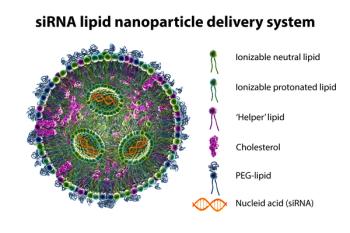
Microseparations and Analysis Covered at HPLC 2024
At HPLC 2024 in Denver, Colorado, various sessions will be led by experienced scientists, covering different aspects of chromatography techniques and maximizing their effectiveness. Here is some information about tomorrow’s sessions.
Microseparations, or the separation of mixtures at a small scale, can be a useful tool in separation science for a variety of research. This type of technology is based on the application of micro structured equipment units. Such units contain structured elements with micro-scale dimensions, which is necessary for the implementation of classical downstream unit operations within the overall micro-scale production process (1). At HPLC 2024 in Denver, Colorado, scientists from industry and academia presented on topics surrounding microseparations during a session on Tuesday.
Effect of Stationary Phase Architecture and Surface Chemistry in Proteomics
The first presentation, given by Jiri Urban of Masaryk University in the Czech Republic, covers mass spectrometry-based bottom-up proteomics. The main workload in peptide characterization is utilized by the mass spectrometer itself, and chromatographic separation primarily controls the number of peptides entering the detector. Consequently, simple linear acetonitrile gradients are generally used, and less attention is paid to the type of stationary phase and its architecture. This work aimed to contribute to this less-explored area by characterizing the effect of stationary phase type on separation quality in proteomics.
Comparison of Ultrahigh-Pressure and Low-Pressure Packing Techniques for Long Capillary Columns
Increasing pressure limits for commercial capillary ultrahigh-pressure liquid chromatography (UHPLC) instruments and custom UHPLC instrument designs has caused a growing interest in use of long (>50 cm) capillary columns packed with sub-2 μm particles that can fully realize the gain in chromatographic efficiency afforded by instrument advancements. However, efficiently packing long capillary columns with sub-2 μm particles has presented many challenges related to capillary inlet clogging and increasing packed bed back pressure, which have necessitated the use of ultrahigh-pressure packing (UHPP) systems (>2,070 bar) to generate long columns within reasonable times. In this work, led by Tate A. Hancock and Robert T. Kennedy of the University of Michigan, in Ann Arbor, Michigan, columns packed of varying lengths under UHPP and LPP conditions with sub-2 μm C18 particles are evaluated to determine fundamental differences in columns produced via both techniques.
Improving Throughput and Sensitivity in Capillary LC
Liquid chromatography is one of the most widely used analytical techniques in the world. Increasing the speed of liquid chromatographic separations can enable its use in high-throughput screening applications. However, the high flow rates needed to achieve these speeds using analytical-scale columns can cause challenges related to waste generation and compatibility with electrospray ionization for mass spectrometric detection. In this study, scientists from Rowan University, Axcend Corporation, and the University of Michigan describe progress in developing high-throughput separations using capillary-scale LC columns.
High Throughput Capillary LC
The cycle time of a liquid chromatography (LC) system is the sum of the time for the chromatographic run and the autosampler injection sequence. Although LC separation times in the 1–10 s range have been demonstrated, injection sequences are commonly > 15 s, limiting throughput possible with LC separations. In this work, Robert T. Kennedy of the University of Michigan, in Ann Arbor, Michigan establishes a droplet system that replaces the autosampler with a two-position, 20 nL internal loop valve coordinating with a three-axis positioner to sample droplets from a well plate.
Reference
(1) Kenig, E. Y.; Su, Y.; Lautenschleger, A.; et al. Micro-Separation of Fluid Systems: A State-of-the-Art Review. Sep. Purif. Technol. 2013, 120, 245–264. DOI:
Newsletter
Join the global community of analytical scientists who trust LCGC for insights on the latest techniques, trends, and expert solutions in chromatography.





